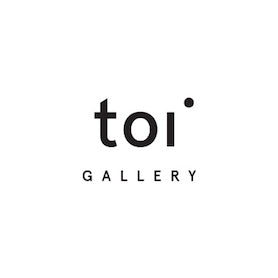On Collage or How to Make a Haiku with Scissors

The German artist Max Ernst said about the art of collage, “Collage is the noble conquest of the irrational, the coupling of two realities, irreconcilable in appearance, upon a plane which apparently does not suit them.”
The collage technique, is an emblem of the 20th Century in its expression of the will of creation and destruction, originality and reproduction. Artists, from the beginning of the 20th Century and after WWII, saw the critical potentiality of collage, its capacity of de-naturalize and de-contextualize as a way to call modernity into question from a new perspective.

The nature of collage prevents us from carrying on with a certain uncritical vision of the world; fragments interrupt a continuous narrative of progress, and things that do not seem to belong together convey a secret message to be deciphered by the viewer.

http://www.toiartgallery.com/collections/nekane-fernandez
There is also a very playful and democratic side to collage: it is somewhat more accessible than, say, watercolor or drawing. Because it does not require the technical skill of fine arts, collage invites us to participate.
In her book, “Collage” (Chronicle Books), Danielle Krysa (creator of the blog, The Jealous Curator) explores the playful and satiric side of this technique as it’s been employed by contemporary artists. She describes collage as a technique that turns the world of everyday two- and three-dimensional objects into an immense “thrift store,” where one can hunt for treasures and bring them together in surprising ways, making new meanings.
http://www.thejealouscurator.com/blog/wp-content/uploads/2014/09/collagepost.jpg
Artist and illustrator Eleonora Arroyo, who has worked with collage since the beginning of her career, says, “The first time I illustrated a book I tried to do drawing but I did not find it comfortable. Looking for a different way of expression, the scissors made me feel that I could express myself with total freedom. It is a very agreeable technique; often the same material accidentally brings sculptural solutions.”

http://www.toiartgallery.com/collections/eleonora-arroyo
There is a therapeutic side of collage too. The innovative art therapist, Helen Landgarten, developed a method she called “magazine photo collage” which stimulates storytelling with pictures found in magazines. The freedom of expression that collage offers makes it a perfect technique for children to make art while having fun. Collage is a great activity to do with kids, and can even be used as a communication tool, a way for children to talk about things that they find difficult to express.

http://www.toiartgallery.com/collections/angela-corti
Barcelona-based artist and graphic designer Alma Larroca, describing her own work in assemblage (a form of collage that uses two- and three-dimensional materials), points to the way that the technique offers a way to transform forgotten objects with new arrangements and new meaning. Larroca says, “I especially enjoy making assemblages from elements and broken toys I’ve found (my children give me some of them, or my friends or I buy them at flea markets), re- signifying what is supposed to be obsolete or discarded. It is the best way I found to express my feelings.”

http://www.toiartgallery.com/collections/alma-larroca
The creative possibilities of collage resemble those of poetry, in which every element has its own particular meaning. Artist Cecilia Afonso Esteves makes delicate flower collages that she describes in the form of a Haiku:
“Composing with fragments. Like someone who makes Ikebana. One hand cuts the paper, the other holds it. When I notice that gesture, I think of the paper, its nature, its being in the world.”

http://www.toiartgallery.com/collections/cecilia-alfonso-esteves
This attention to the gesture of cutting paper and holding the scissors seems to be a very imporant part of the artistic process, one that conveys the work with a certain identity. The Argentinean artists Angela Corti observes: “Collage for me is something instinctive, it’s like drawing with scissors, without planning and without sketching first, because unthinkable things show up this way. Collage gives you the freedom to work with different kinds of papers; I like to create my own papers, I screen-print them or use other techniques, and I also love using discarded papers. When I cut them it feels like its original context become invisible but not in their essence. The type of paper used by a collagist gives their work identity, even in the artist’s gesture of the hand cutting the paper, the way one handles the scissors, all adds character to the artwork and can be very different in the hand of one artist or another.”

http://www.toiartgallery.com/collections/angela-corti
The technique of collage is not only a very useful tool for critical thinking, communicating one’s feelings and storytelling, but also can provide opportunities to have fun and spend time with our kids. It is a wonderful form of self-expression that invites us to celebrate diversity and a playful way to create a new, enchanting world.

http://www.toiartgallery.com/collections/patricia-tewel/products/lejos

http://www.toiartgallery.com/collections/eleonora-arroyo/products/el-invitado

http://www.toiartgallery.com/collections/angela-corti/products/murgueros
Leave a comment
Comments will be approved before showing up.




